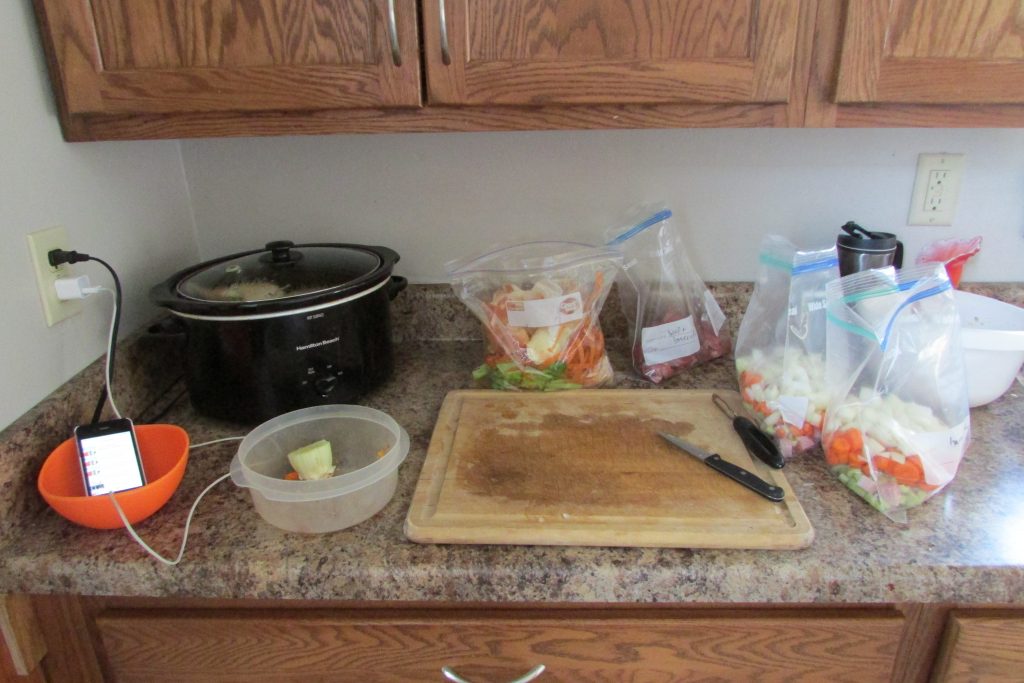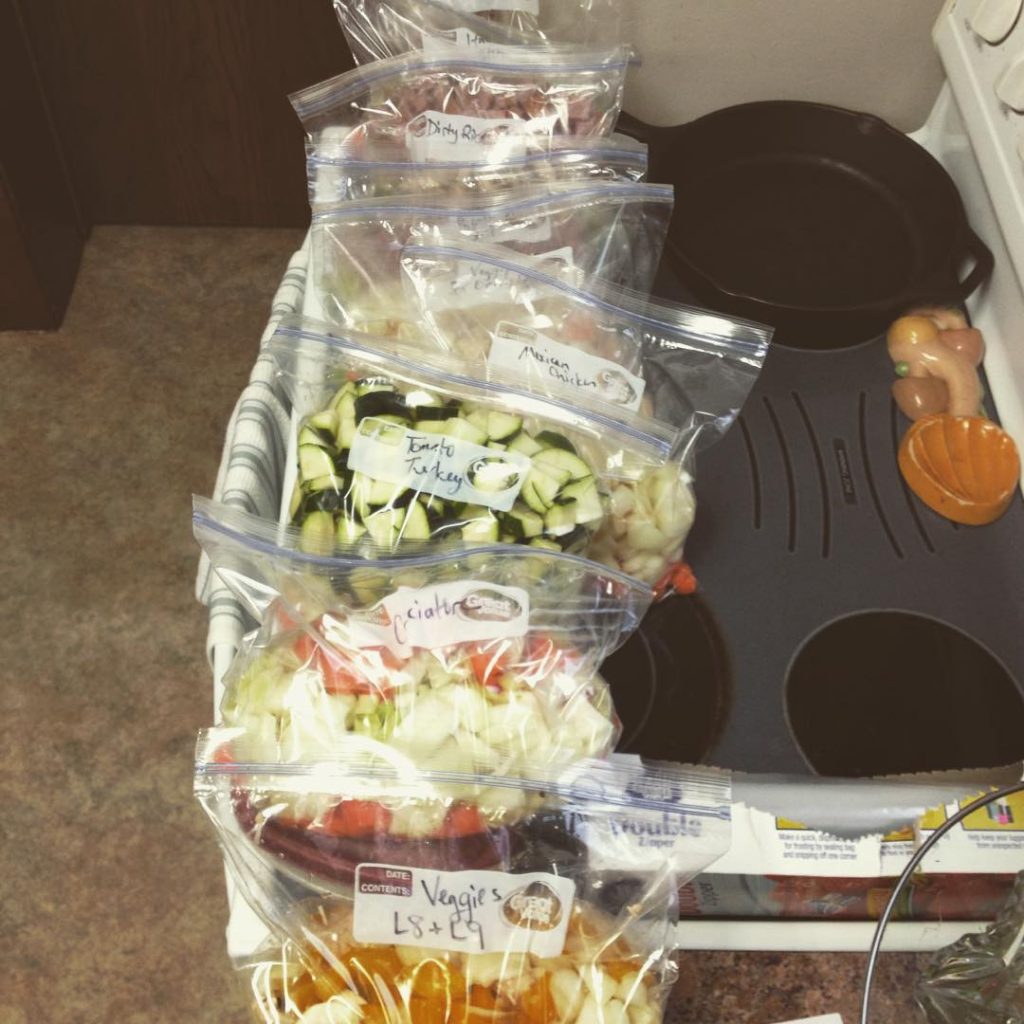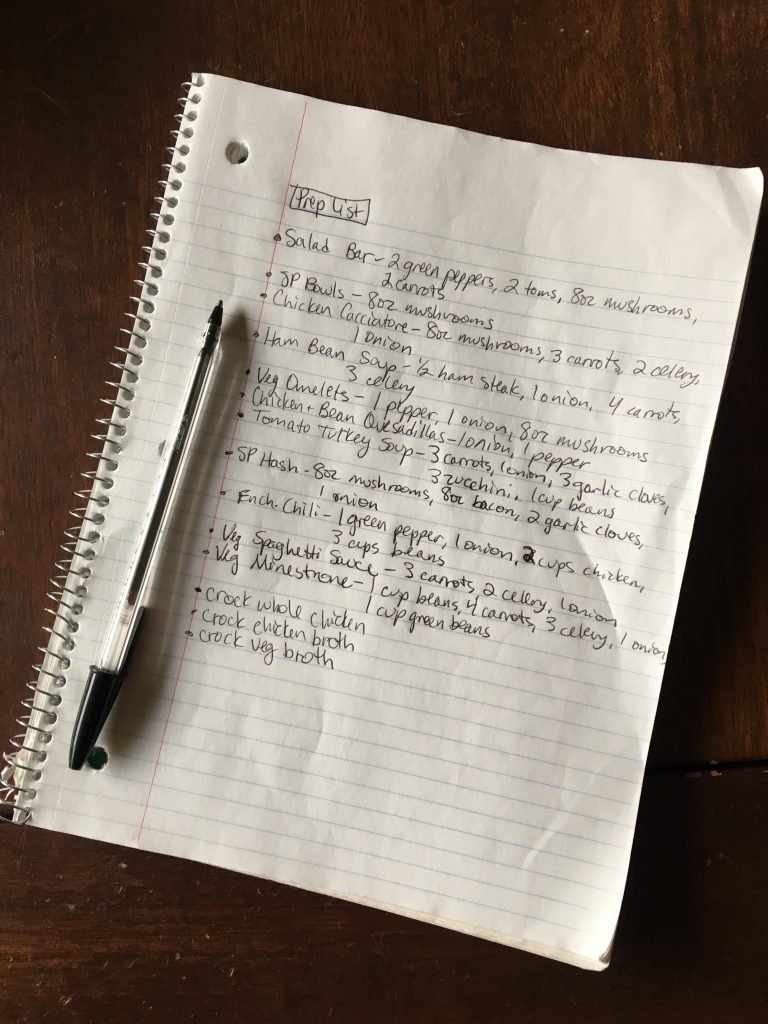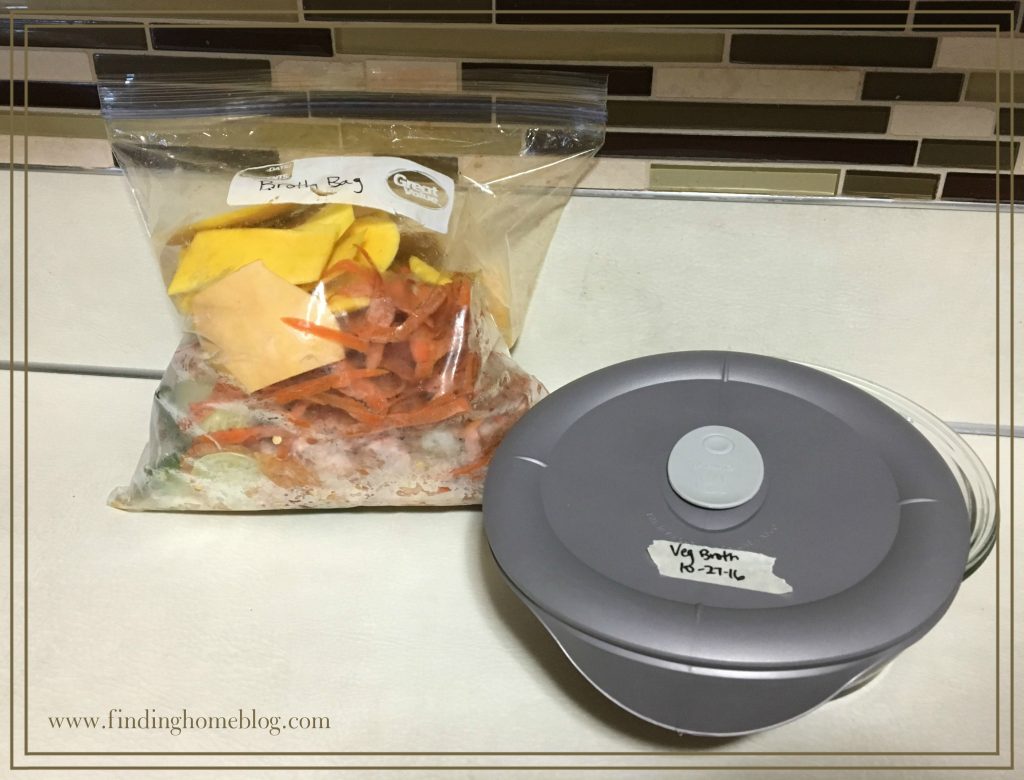When we lived in Iowa, we had one tiny grocery store in our town. While this was fine for fill-in trips and occasional splurges, it wasn’t ideal for regular grocery shopping to feed our family of six. So every 2-3 weeks, we made the 45-minutes-one-way drive to a larger town that had an Aldi and a Walmart.
Whether you live in the middle of nowhere like we did, or you find yourself making constant trips to the store with your grocery budget running out of control, you may be looking for a way to menu plan and grocery shop less than once a week.
And friends, I’m here to tell you that it is possible to only shop a couple times a month and still eat nourishing, real food meals every day. You just have to know how to do it.

Plan perishables first. When you’re making your meal plan, chances are you have some meals that use mostly ingredients from the pantry. Whether it’s taco soup, which uses mostly canned goods, a simple spaghetti with sauce you’ve frozen ahead of time, or oatmeal pancakes, which require mostly dry goods and a bit of butter and milk from the fridge, there are some meals that you can put off eating until later.
And then there are meals that you can only eat within the first few days. Salads? Probably need to happen before the greens get wilty in the fridge. Fruits like bananas and berries? Mold and mushy goo are not too far in the future. Whether you’ve consciously thought about it or not, you know that certain foods have a shorter lifespan than others.
This means you need to look at the meals you want to make and schedule the more perishable meals first.

Make the most of make ahead meals. If you’re still not sure which meals would be best to put off until later, head to the wealth of make ahead meals on the Internet. Check out sites dedicated to once a month cooking, freezer meals, crockpot meals, and the like, and you should have quite the list of meals you can prepare ahead of time and then freeze for later.
Freeze ingredients rather than full meals. I wrote a whole post about ingredient freezer cooking, but the main idea is to chop up veggies, portion out meats, and save bits and pieces of things that you can use as part of a future meal. Not only does this reduce waste, but it also makes for a quicker meal later on because part of the prep work is already done for you.

Make a prep list along with your meal plan. Once you have your list of meals, you’ll also need to know which foods to take care of right away so that they don’t go bad before you use them! After all, there’s no point in shopping for 2 weeks’ worth of groceries if half of them end up in the garbage.
For me, that would look something like this. If my meal plan included Enchilada Chicken Chili as part of the second week, I would write down that I needed to chop 1 green pepper, 1 onion, and include 2 cups of chicken and 3 cups of cooked pinto beans. Sometimes I even have cooked chicken and cooked beans already in the freezer! Since all of those ingredients are freezable, I would put them all in a container or large ziploc bag in the freezer and cross that meal off of my prep list.

If I wanted to make Sweet Potato Breakfast Hash with eggs, I would write 8oz. of mushrooms, 1 onion, 1/2 lb. of bacon, and 2 cloves of garlic on my list. I would put all of those in a labeled container in the freezer together. (Sweet potatoes don’t freeze the best, but should be fine sitting in your pantry for a couple weeks).
I like to write my prep list in the order of the meals, starting with the one we’ll be eating first, and then start from the bottom of the list. That way, if I run out of time before I get through the whole list, the foods not properly stored away will be eaten first anyways.
Helpful Hint: Make sure you label everything that goes into your freezer! Even if you think you’ll remember what it is and when it is for, labels help keep you from pulling a mystery bag or container out months later and wondering what all is in it. I just use simple masking tape and a sharpie to label mine.
As I’m running through this prep list, I usually end up with plenty of vegetable peelings for making broth too – free food!

Whether you’re trying to curb impulse buys at the store, waste less ingredients, or even save money on gas, shopping less often than once a week may be the best plan for you. While I’ve found it to be a little bit more work up front, I love reaping the benefits of having a few busy days followed by a couple weeks of super easy meals.
I’m less stressed because I know what’s coming, I know that I already have what I need, and I know that some of the work is already done.

How often do you go grocery shopping? Have you considered shopping less often?
Related:
Leave a Reply